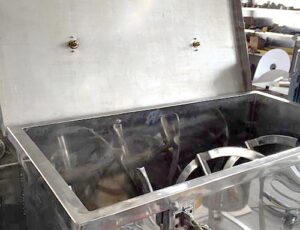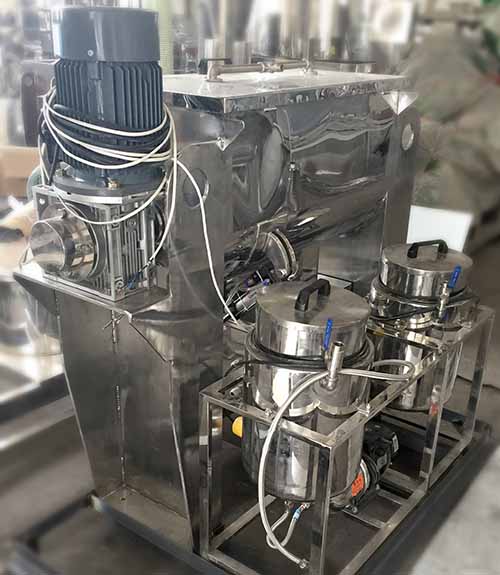
Background
Mixing wet and dry materials in a ribbon blender requires a series of scientific method when adding raw material. The ribbon blender also needs to equip liquid spray system to facilitate liquid addition. Vortex researchers write this article to public some useful skills that may match your mixing process.
Liquid addition critically affect the final products’ quality. The characteristics of each liquid and solid components, how they interact, as well as the amount of liquid added, these factors determine the mixing result.
Liquid spray function of ribbon blender
Ribbon blenders are commonly used for blending dry powders, granules, pellets and other solid forms. The double layer ribbons rotate and move materials both radially and laterally to insure thorough blends in short cycle times. Sometimes, customer need to add liquid at mixing, Vortex company will equip unique liquid spray system for this application.
The addition of liquids to a dry batch can be accomplished in several ways. Choosing the right method is crucial to establishing repeatable blending results in the shortest cycle time possible.
Some skills to notice
-
If the liquid component is a minor ingredient, like a fragrance, oil or flavoring, introduce it to the dry raw materials through atomizing nozzles installed in a spray bar assembly. A metering pump may be used to feed the liquid at a controlled rate, or the spray bar may be connected to a pressure vessel. The liquid flow rate is critical because you want to avoid flooding the blender, forming wet clumps of powder, or unnecessarily delaying the mixing cycle. Liquids are normally added while the batch is being agitated in order to help ensure uniform coating or absorption. Because different solids behave differently upon contact with liquid, testing is recommended to confirm the proper pressure setting or liquid flow rate, the nozzle size, type and location, blender speed, etc.
-
Do not underfill your blender. Optimal mixing in a ribbon blender requires enough batch material – equivalent to at least 30-40% of the rated volumetric capacity. Working with smaller volumes, the blender fails to generate adequate contact between the agitator and the product. In addition, the chances of materials building up on the sidewall or parts of the agitator are higher when liquid is sprayed to an underfilled batch. Interior surfaces must be well polished and each weld should be radiused to help prevent material buildup.
-
A well-designed blender holds close tolerances – in the range of 3-5mm – between the outer ribbon and the trough to prevent “dead zones” in the batch. Installing scrapers in strategic parts of the agitator (set as close as possible to the trough wall without touching) is recommended for wet powder applications that tend to pack in corners.
Sample Application: Water Treatment Products

Shown is a Vortex Model VRB-0.3 used for sanitary production of water treatment products blends. This ribbon blender is equipped with spray bar.



